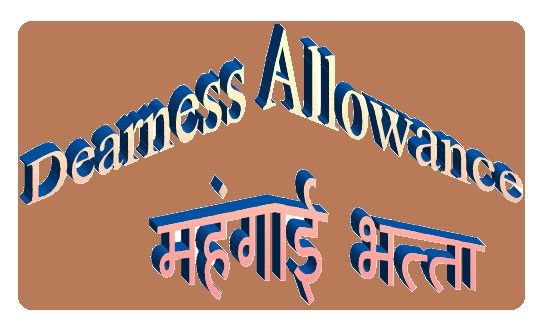Emergence of Dearness Allowance (DA)
The Dearness Allowance (DA) was introduced after the Second World War and was then known as the Dear Food Allowance. The Dearness Allowance is an allowance which is given to the employee against the price rise in a countries economy i.e. to mitigate the impact of inflation.
Concept of Dearness Allowance
- At the time of inflation, the price of every commodity rises, and it becomes tough for the people to meet those hike in the price. To help the people, most of the public sectors give Dearness Allowance to its employees. These help the people to cope with the inflation period. Compensation to price rise is given in the form of DA (Dearness Allowance).
- This allowance has been dealt with separately as it compensates the variation in the purchasing power of the salary. Apart from the dearness allowance, there are many other Allowance being paid to the Government employees.
- Some of them are House Rent Allowance, Education Allowance, Risk Allowance, Transport Allowance, Compensatory Allowance and many more.
Fifth central pay commission and its recommendation on DA (Dearness Allowance)
- The fifth Central Pay Commission recommended uniform neutralization of DA at 100% to employees at all levels. Conversion of DA into Dearness Pay each time the CPI increases by 50% over the base index with Dearness Pay counting for all purposes including retirement advantages and Dearness
- Allowance including Dearness Pay being paid net of tax. The Commission did not favour the option of employing separate indices for each class of employee because of the sheer impractically of the task and therefore, recommended using the 12 monthly average of All India CPI (WI) with base 1982 for calculating DA.
How is Dearness Allowance calculated
The rate of DA is calculated in terms of the percentage increase in 12 monthly average of AICPI (base 19820 over the average index of 306.33 which was the reference base for the current scales of pay recommended by the Fifth Central Pay Commission.
The Fifth Pay Commission had recommended that DA should be converted into DP each time the CPI increases by 50% over the base index. The Government merged 505 of DA with the basic pay from 01.04.2004.
The formula for calculating the Dearness Allowance for the period from 1.07.2004
12Monthly Average-306.33
{ ~~~~~~~~~~~~~~~~~~~~ X 100}-50= percentage increase in prices
306.33 (ignoring fractions and Inflation neutralisation at 1005 at all levels)
- The relation of an employer and its employee is only for the wages or the salary which he is entitled to for the work he does. The wages may include house rent allowance but eventually, does not include any other Allowance.
- The Dearness Allowance which is given to an employee depends on the discretion of the company. Most of the public sector units are bound to give Dearness Allowance with the salary of a person. The amount of Dearness Allowance to be given totally depends on the Government’s policy.
Private companies and Dearness Allowance
- Whereas a private company is not bound to give Dearness Allowance. It is at their discretion and terms of contract with the employee to give D.A. A private company cannot be forced to give DA. Whenever D.A. is paid by the company, the same being part of its expenses, it can account for the same as its expenses and only the profit will get taxed.
- Therefore apart from treating the D.A. as the company’s business expenditure, there is no other Income Tax Exemption. Private companies are profit maximising companies, unlike a public company which works for social welfare motive.
The concept of Dearness Allowance is a totally different concept unlike the other allowances being given to an employee. The amount of Dearness Allowance keeps on changing from time to time. It is done by the Government authority keeping in mind the position of the inflationary condition of the economy.
Every Government employee irrespective of their post and position are entitled to D.A. not only the salaried persons but the pensioners and their families are also entitled to D.A. The Dearness Allowance is not allowed during a pensioner’s time overseas if employment is undertaken.
However, the DA remains beneficiaries to overseas pensioners whilst the recipient is not employed. In the present world, many private companies also provide D.A. to its employees along with their salary. This assures the employees to meet their needs. The employees also gain confidence in the company and this in return makes them more motivated and hence resulting in the economic growth.
Reference
- https://en.wikipedia.org/wiki/Dearness_allowance
- http://www.gservants.com/dearness-allowance-calculator-for-da-from-january-2017/
Suggested Readings.
 Serato DJ Crack 2025Serato DJ PRO Crack
Serato DJ Crack 2025Serato DJ PRO Crack










 Allow notifications
Allow notifications



